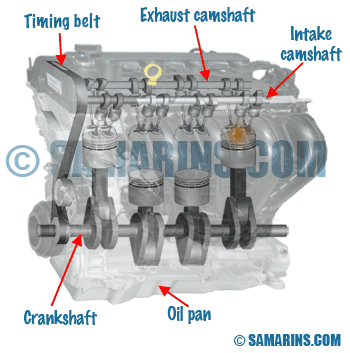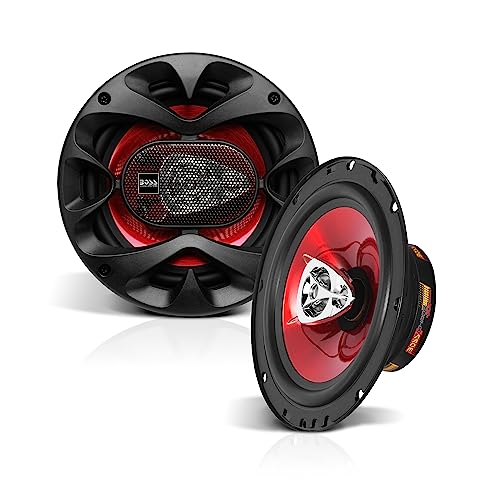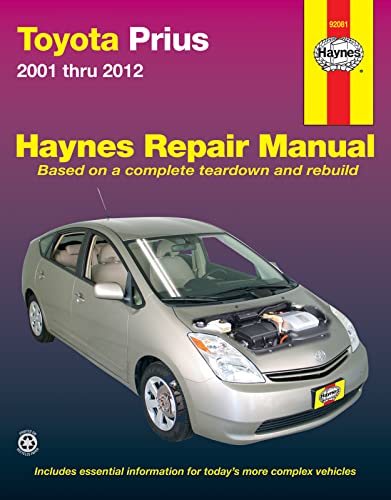As an Amazon Associate, I earn from qualifying purchases
Have you ever wondered what happens if the timing belt breaks on your Toyota? It’s a question that many car owners don’t think about—until it’s too late.
Your timing belt plays a crucial role in keeping your engine running smoothly, and if it snaps, it can lead to serious damage and costly repairs. You’ll discover exactly why the timing belt matters, what signs to watch for, and what to do if it breaks while you’re on the road.
Keep reading to protect your Toyota and avoid unexpected breakdowns.

Credit: www.samarins.com
Role Of The Timing Belt
The timing belt is a small but vital part of your Toyota’s engine. It controls the engine’s internal parts, keeping everything moving in perfect order. Without it, the engine cannot work properly. Understanding the role of the timing belt helps explain what happens if it breaks.
This belt connects the crankshaft and camshaft, making sure they turn together. The timing belt’s job is to keep the engine parts in sync. This synchronization allows the engine to run smoothly and efficiently.
Timing Belt Function In Toyota Engines
The timing belt moves the camshaft and crankshaft at the right speed. It controls the opening and closing of the engine valves. These valves let air and fuel in and push exhaust gases out.
If the belt slips or breaks, the valves and pistons lose coordination. This causes the engine to stop working or get damaged. Toyota engines rely on a strong, well-maintained timing belt for proper function.
Importance For Engine Synchronization
Synchronization means all engine parts work together at the right time. The timing belt keeps this perfect timing. It ensures the valves open just as the pistons move.
Without this timing, valves can hit pistons. This collision can cause serious engine damage. The timing belt prevents this by keeping everything in sync. It protects the engine and helps it run smoothly.

Credit: www.captoyota.com
Causes Of Timing Belt Failure
Timing belts play a key role in a Toyota’s engine. They keep the engine parts moving in sync. If the timing belt breaks, serious engine damage can happen. Understanding what causes timing belt failure helps prevent this problem.
Wear And Tear Factors
Timing belts wear out over time. The belt’s teeth can become worn or cracked. Heat and friction cause the belt to weaken. Age also makes the belt less flexible. Regular driving adds miles and stress to the belt.
Impact Of Poor Maintenance
Skipping belt inspections leads to unnoticed damage. Not replacing the belt on schedule increases risk. Ignoring oil leaks can weaken the belt material. Using low-quality replacement parts reduces belt life. Poor maintenance speeds up timing belt failure.
Environmental Influences
Extreme temperatures affect belt durability. Hot weather can dry out the belt rubber. Cold weather can make the belt brittle. Dirt, dust, and debris can wear the belt teeth. Harsh driving conditions increase belt stress and damage.
Immediate Effects Of A Broken Timing Belt
The timing belt in a Toyota plays a crucial role in the engine’s function. It keeps the engine’s valves and pistons moving in sync. When the timing belt breaks, the engine cannot work properly. The immediate effects are serious and can cause the car to stop suddenly. Understanding these effects can help you act quickly and avoid further damage.
Engine Stalling And Shutdown
A broken timing belt causes the engine to stall without warning. The engine stops running because the belt no longer turns the camshaft. Without this, the valves and pistons cannot move correctly. This sudden shutdown can happen while driving, creating a dangerous situation. Restarting the engine is usually impossible until the belt is fixed.
Loss Of Power And Control
The timing belt failure leads to a loss of engine power. The car will feel weak and unresponsive. This loss affects acceleration and speed control. Drivers may find it hard to steer or maintain speed. The car may jerk or hesitate, making driving unsafe. Immediate repair is necessary to restore control and power.

Credit: www.youtube.com
Potential Engine Damage
The timing belt controls the engine’s moving parts. If it breaks, serious damage can happen quickly. The engine stops working properly and parts can collide inside. This damage can be very costly to fix. Understanding the potential harm helps you see why timing belt care is important.
Valve And Piston Collisions
When the timing belt breaks, valves and pistons lose sync. Valves may stay open as pistons move up. This causes collisions that bend valves or crack pistons. These parts are delicate and expensive to replace. Such damage can stop the engine from running.
Cylinder Head And Camshaft Damage
The cylinder head holds valves and camshafts. A broken timing belt can cause sudden stops and shocks inside the engine. This can crack the cylinder head or damage camshafts. Repairs may require removing the entire cylinder head. This repair is complex and costly.
Risk Of Complete Engine Failure
Severe damage from a broken timing belt can lead to full engine failure. The engine may seize or stop working entirely. This might force you to replace the whole engine. Preventing timing belt failure can save you from this expensive outcome.
Damage Severity By Toyota Model
Damage severity from a broken timing belt varies by Toyota model. Some engines suffer more harm than others. Knowing your model’s risk helps you act fast. This knowledge can save you from costly repairs.
Timing belts keep engine parts moving together. If the belt breaks, engine parts may collide or stop working. The damage depends on the engine type and design.
Interference Vs Non-interference Engines
Interference engines have pistons and valves that share space at different times. If the timing belt breaks, pistons can hit valves, causing serious damage. This may lead to bent valves, broken pistons, or a ruined engine.
Non-interference engines avoid this risk. Pistons and valves never collide, even if the belt breaks. The engine stops running, but major damage is rare. Repairs usually cost less.
Common Models At Higher Risk
Toyota models with interference engines face higher damage risk from broken belts. Examples include the Camry, Corolla, and Tacoma with certain engines. These models may need expensive repairs after a timing belt failure.
Some older Toyota models use non-interference engines. These include specific years of the Prius and RAV4. Damage is usually minimal if the belt breaks, but the engine will stop running.
Repair Costs And Considerations
Repairing a broken timing belt on a Toyota can be costly. The price depends on the damage caused. Some repairs are simple, while others need more work. Understanding repair costs helps you plan better. It also helps to know when a full replacement is required.
Typical Repair Procedures
First, mechanics inspect the engine for damage. They check valves, pistons, and camshafts. If parts are damaged, they replace them. The timing belt and tensioner also get replaced. Sometimes, water pumps are changed too. After parts are fixed, the belt is reinstalled. Finally, the engine is tested for proper work.
Cost Estimates For Damage Fixes
Basic timing belt replacement costs around $300 to $500. If the engine has damage, costs rise to $1,000 or more. Valve or piston repairs add to the price. Labor fees vary by location and mechanic. Toyota parts may cost more than generic ones. Getting multiple quotes helps find fair prices.
When Replacement Is Necessary
A full timing belt replacement is needed if the belt breaks. Also, replacement is required if the belt is worn or cracked. Delaying replacement can cause serious engine damage. Most Toyota models suggest changing the belt every 60,000 to 100,000 miles. Replacing early saves expensive repairs later.
Preventive Measures
Preventive measures help avoid costly repairs and keep your Toyota running smoothly. Regular care of the timing belt prevents sudden breakdowns and engine damage. Checking and replacing the belt on time ensures safety and reliability.
Recommended Timing Belt Replacement Intervals
Toyota suggests changing the timing belt every 60,000 to 100,000 miles. Follow your car’s manual for the exact interval. Replacing it on time stops unexpected belt failure and engine issues.
Signs Of Timing Belt Wear
Listen for unusual noises from the engine area. Look for cracks, fraying, or shiny spots on the belt. Car slipping or trouble starting can also signal belt problems.
Routine Inspection Tips
Check the belt every 20,000 miles or during oil changes. Inspect the belt’s tension and condition visually. Let a mechanic look closely if you notice any signs of wear.
Frequently Asked Questions
What Are The Signs Of A Broken Timing Belt On A Toyota?
A broken timing belt causes the engine to stop suddenly and the car won’t start again.
Can A Toyota Engine Be Damaged By A Broken Timing Belt?
Yes, many Toyota engines suffer severe damage if the timing belt breaks while running.
How Much Does It Cost To Fix A Broken Timing Belt On Toyota?
Repair costs vary but can range from a few hundred to over a thousand dollars.
How Often Should A Toyota Timing Belt Be Replaced?
Toyota timing belts usually need replacement every 60,000 to 100,000 miles for safety.
Can I Drive My Toyota If The Timing Belt Breaks?
No, driving is not possible because the engine will stop immediately when the belt breaks.
What Causes A Toyota Timing Belt To Break Suddenly?
Wear, age, poor maintenance, or oil leaks can cause the timing belt to snap.
Conclusion
A broken timing belt can cause serious engine damage in a Toyota. Repairs may be costly and time-consuming. Regular checks and timely replacement help avoid these problems. Pay attention to your car’s maintenance schedule. Keep your Toyota running smoothly and safely.
Don’t wait for signs of wear. Stay ahead with simple care steps. Your engine will thank you.
As an Amazon Associate, I earn from qualifying purchases


